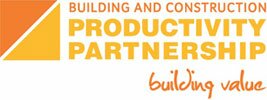The main outcome for the Evidence Workstream is a shared understanding of what productivity means, how it is measured and the primary indicators used to monitor it. We’re pulling together the evidence needed to help decide what to do to improve industry productivity.

Stage 1 of the Productivity Partnership’s Research Action Plan (RAP) is complete. This has gone some way to answering the key research questions identified in the RAP released by the Evidence Workstream in March 2012. These are related to eight key research areas:
 Industry processes
Industry processes
 Skills
Skills
 Technology
Technology
 Client value
Client value
 Regulatory environment
Regulatory environment
Work to date has prioritised the three key research areas highlighted above. Follow the links to specific projects and key findings for each key research area and more information, including the full research reports. Some projects sit under more than one key research area.
RAP findings are being presented at the Productivity Hub Conference in Wellington on 2 July 2013.
| • | Abstract – “Construction sector productivity – the devil’s in the detail” |
| • | Conference presentation |
| • | Conference paper |
Key findings
A number of key findings have emerged from Stage 1 of the RAP with significant implications for the residential and non-residential sectors and the Canterbury rebuild. For a start, we’ve found that:
| • | Very different construction processes in residential and commercial building and the high number of small firms make it difficult to transfer learning and best practice across the sector. |
| • | In residential construction, productivity can be improved in the early stages of the construction process by better informed clients, streamlined consenting and tendering processes, better project management and project planning skills and increasing offsite prefabrication. |
| • | In commercial construction, productivity can be improved by companies having access to better information on forecast demand and using more sophisticated procurement practices. |
| • | In Canterbury, the rebuild is complicated by insurance issues and intense competition for resources but provides the opportunity to fast-track innovation for the benefit of the industry as a whole. |
More observations
Next steps
The RAP has delivered real “mud on boots” research that can be applied in practical ways to improve the productivity of New Zealand’s building and construction sector. See What could be done next?. However, for benefits to be fully realised, these opportunities to enhance productivity need to be partnered by sufficient intervention and investment to create a significant culture change.
Stage 2 of the RAP will see more projects initiated to answer outstanding key research questions, and implementation of findings to date. This will continue to involve close collaboration with our valued research partners in industry, education and research organisations and government.


 Industry structure
Industry structure Productivity measures
Productivity measures Canterbury rebuild
Canterbury rebuild